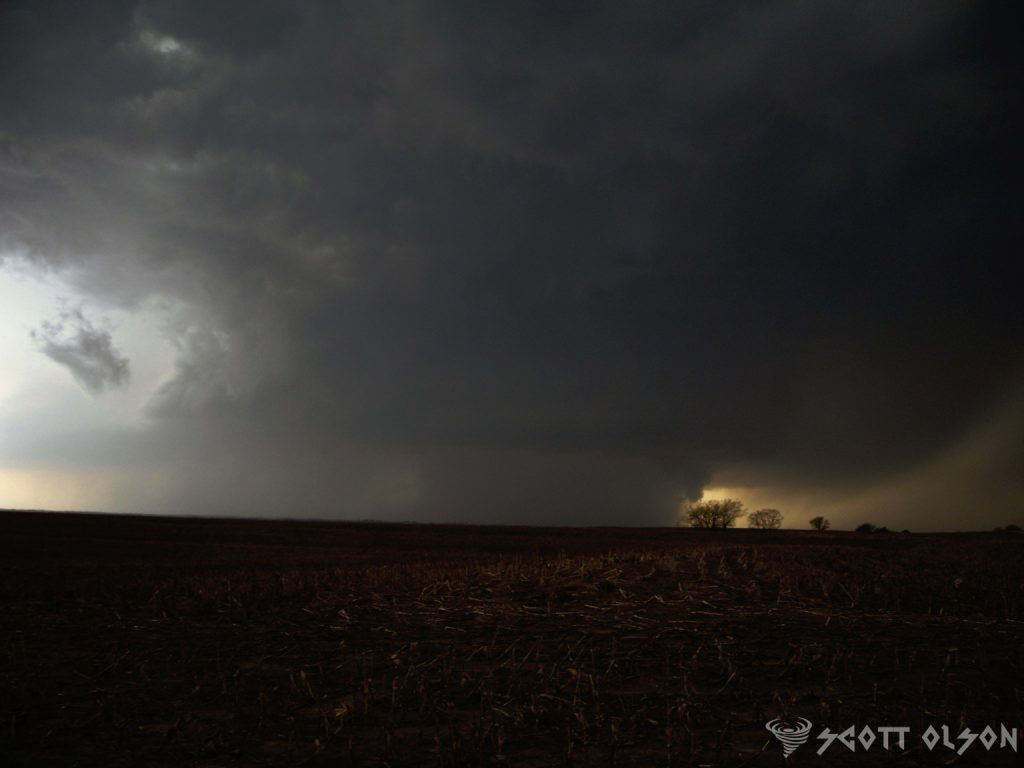Unraveling the Secrets of Severe Weather: The Supercell Composite Parameter and Its Vital Role in Forecasting
In the world of meteorology, forecasting severe weather events is a complex and challenging task. To help predict the likelihood of severe thunderstorms and tornadoes, meteorologists rely on various tools and indices. One such tool is the Supercell Composite Parameter (SCP), a powerful indicator that combines multiple atmospheric variables to assess the potential for supercell thunderstorm development. In this article, we will dive deep into the Supercell Composite Parameter, exploring its components, its significance in severe weather forecasting, and how it helps protect lives and property.

Understanding Supercell Thunderstorms: Before delving into the Supercell Composite Parameter, it’s essential to understand what supercell thunderstorms are and why they are so dangerous. Supercell thunderstorms are highly organized, rotating storms that can produce severe weather hazards such as large hail, damaging winds, and tornadoes. These storms are characterized by a persistent rotating updraft called a mesocyclone, which allows them to maintain their intensity for extended periods. Supercell thunderstorms are responsible for some of the most destructive and deadly severe weather events in history, making their accurate prediction a top priority for meteorologists.

The Components of the Supercell Composite Parameter: The Supercell Composite Parameter is a mathematical formula that combines several key atmospheric variables to assess the potential for supercell thunderstorm development. The main components of the SCP are:
- Convective Available Potential Energy (CAPE): CAPE is a measure of the atmospheric instability, representing the amount of energy available for thunderstorm development. Higher CAPE values indicate a greater potential for strong updrafts and severe weather.
- Storm-Relative Helicity (SRH): SRH is a measure of the wind shear in the lower atmosphere, which is crucial for the formation of rotating updrafts in supercell thunderstorms. Higher SRH values suggest a greater likelihood of mesocyclone development and tornado potential.
- Bulk Wind Difference (BWD): BWD represents the change in wind speed and direction with height, another important factor in supercell development. Strong wind shear, as indicated by high BWD values, helps to create an environment conducive to supercell formation.
- Lifting Condensation Level (LCL): The LCL is the height at which air becomes saturated and condensation begins, leading to cloud formation. Lower LCL heights are associated with a greater potential for tornadoes, as they allow for a more concentrated and intense rotation near the ground.
The SCP formula combines these variables in a specific way to create a single value that represents the overall potential for supercell thunderstorm development. Higher SCP values indicate a greater risk of severe weather, particularly supercell thunderstorms and tornadoes.
The Significance of the Supercell Composite Parameter in Severe Weather Forecasting: The Supercell Composite Parameter is a crucial tool for meteorologists in their efforts to predict and warn the public about severe weather events. By analyzing SCP values, forecasters can identify areas where the atmospheric conditions are most favorable for supercell thunderstorm development. This information allows them to issue timely and accurate severe weather watches and warnings, giving people in affected areas the opportunity to take necessary precautions and seek shelter.
One of the key advantages of the SCP is its ability to provide a comprehensive assessment of the severe weather potential. By combining multiple atmospheric variables into a single value, the SCP offers a more holistic view of the overall risk, rather than relying on individual factors alone. This approach helps to reduce the likelihood of false alarms or missed events, improving the overall accuracy and reliability of severe weather forecasts.
Real-World Applications and Success Stories: The Supercell Composite Parameter has proven its value in numerous real-world severe weather events. Meteorologists have successfully used the SCP to anticipate and warn the public about impending supercell thunderstorms and tornadoes, saving countless lives and minimizing property damage.
For example, during the devastating tornado outbreak of April 27, 2011, which affected multiple states in the southeastern United States, the SCP played a crucial role in the forecasting process. Meteorologists recognized the extremely high SCP values across the region, indicating an exceptionally high risk of violent, long-track tornadoes. This information allowed forecasters to issue strongly worded warnings and urge people to take immediate action to protect themselves. While the outbreak still resulted in significant damage and loss of life, the accurate and timely warnings based on the SCP undoubtedly saved many lives.
Similarly, during the May 20, 2013, tornado outbreak in central Oklahoma, the SCP once again demonstrated its value. Forecasters identified the high SCP values in the region, suggesting a significant risk of strong to violent tornadoes. The warnings issued based on this information allowed people to seek shelter and prepare for the impending severe weather. The accurate forecasting and timely warnings were credited with saving numerous lives, even as the powerful tornadoes caused extensive damage.
Limitations and Ongoing Research: While the Supercell Composite Parameter is a valuable tool in severe weather forecasting, it is not without its limitations. The SCP is designed specifically to assess the potential for supercell thunderstorm development and does not account for other types of severe weather, such as non-supercell tornadoes or severe wind events. Additionally, the SCP is based on atmospheric conditions at a specific time and location and may not capture the full evolution of a severe weather event over time.
To address these limitations and further improve severe weather forecasting, ongoing research is focused on refining the SCP and developing new tools and techniques. Meteorologists and atmospheric scientists are working to incorporate additional variables, such as high-resolution radar data and machine learning algorithms, to enhance the accuracy and lead time of severe weather predictions.
One area of active research is the development of probabilistic forecasting methods that provide a range of possible outcomes based on the uncertainty in the atmospheric conditions. By presenting severe weather forecasts in terms of probabilities, meteorologists can better communicate the level of risk to the public and support more informed decision-making.
